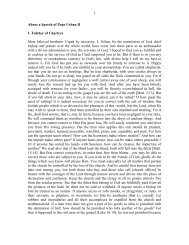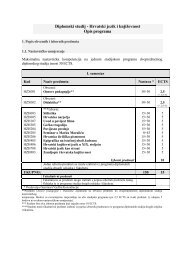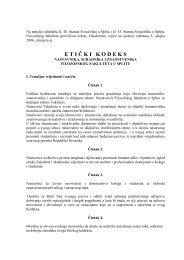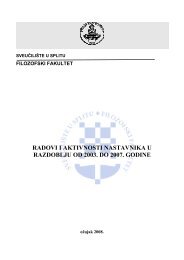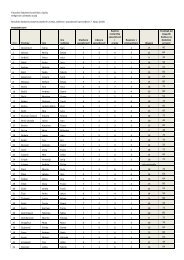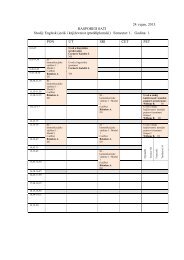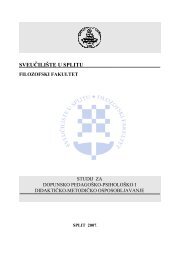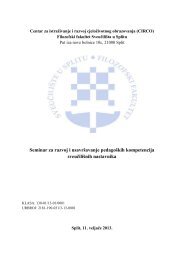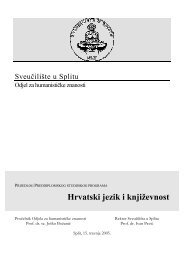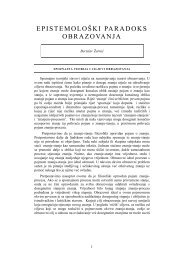English Studies
English Studies
English Studies
Create successful ePaper yourself
Turn your PDF publications into a flip-book with our unique Google optimized e-Paper software.
G R A D U A T E D E G R E E P R O G R A M M E : E N G L I S H S T U D I E S<br />
Recommended<br />
reading<br />
Supplementary<br />
reading<br />
Teaching<br />
methods<br />
Assessment<br />
methods<br />
Language of<br />
instruction<br />
Quality<br />
assurance<br />
methods<br />
with translation studies, with an interdisciplinary mix of linguistics and the<br />
social and cognitive sciences, and with empirical studies of professional<br />
translation practice.<br />
Translation methodology is based on new ideas which include moving from<br />
teacher-centred to student-centred instruction; using teaching methods that<br />
foster responsibility, independence, and the ability to see alternatives; using<br />
methods such as role-playing and simulation to create a greater sense of<br />
realism; developing a sense of profession through a basic or core course in<br />
translation studies that develops broad translation principles and attaches<br />
them to translation practice.<br />
Translation methodology requires a solid theoretical framework, assembled<br />
from translation studies and from allied discipline, and solid empirical data<br />
on the social and cognitive aspects of the translation process and translation<br />
competence.<br />
The student-centred translation methodology focuses on students’ autonomy<br />
from the instructor as a primary objective of a translator education program.<br />
Selected chapters from:<br />
Gile, D. (1995). Basic Concepts and Models for Interpreter and Translator<br />
Training. Benjamins Translation Library. Volume 8. Amsterdam,<br />
Philadelphia: John Benjamins Publishing Company.<br />
Kiraly, D.C. (1995). Pathways to Translation. Pedagogy and Process. Kent,<br />
Ohio; London, England: Kent University Press.<br />
Lambert, S. & Moser-Mercer, B. (1994). Bridging the Gap: Empirical<br />
research in simultaneous interpretation. Amsterdam, Philadelphia: John<br />
Benjamins Publishing Company.<br />
Gambier, Y., Gile, D. & Taylor, Ch. (Eds.). (1997). Conference<br />
Interpreting: Current Trends in Research. Amsterdam, Philadelphia:<br />
John Benjamins Publishing Company.<br />
Dollerup, C. & Lindegaard, A. (Eds.). (1994). Teaching Translation and<br />
Interpreting. Amsterdam, Philadelphia: John Benjamins Publishing<br />
Company.<br />
Čulić, Z. (2005). Teacher-generated materials.<br />
Lectures: student participation encouraged; Seminars: problem-solving<br />
tasks; Student participation encouraged through various tasks and activities<br />
such as: individual work, pair work, group work, etc.<br />
The assessment of student knowledge will be based on the following:<br />
Continuous assessment during the course.<br />
Exam: written and oral.<br />
<strong>English</strong>.<br />
Student feedback via questionnaires and surveys.<br />
Lecturers responsible for the same subject area collaborate closely and<br />
monitor each other's work. Occasional class observations and appraisal by<br />
Head of Department.<br />
52



